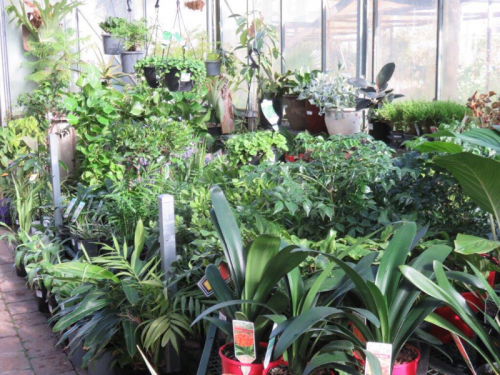
THE popularity of indoor plants waxes and wanes with an upsurge in popularity at present.

Not only here, but quoting from “The Garden”, the journal of the UK Royal Horticultural Society: “For the first time in 20 years, house plants are in vogue again.
“The result is a big increase in sales of house plants with some retailers reporting a 40 per cent jump in the last 12 months”.
In Canberra, I believe the increase in popularity is due to the massive increase in units being built, often with a small or no balcony at all.
Interestingly, in Germany the average number of indoor plants per household is 64, in Holland 58 and in Australia five!
Indoor plants can bring the outdoors into the home, acting like a filter, taking in stale air through the leaves and leaving fresh oxygen. They are equally important in the office besides being a barrier or screen between desks.
In units, house plants can offer a connection with nature and are easy to maintain.
The range of indoor plants is extensive, mostly they are from tropical regions.

So let’s look at the basics on how to care for an indoor garden:
Light and temperature are vital elements for maintaining good growth and appearance. Some indoor plants will tolerate extremely poor light while others must have excellent light to survive. Simply, the darker the leaf the lower level of light they require, whereas variegated leaves need a high level of good light. All indoor plants need to be kept out of draughts such as in winter near windows or in summer and winter from heater ducts.
Watering; 80 per cent of indoor plants are killed from overwatering. Excessive moisture turns the potting mix sour and roots to rot, usually caused with the plant sitting in a saucerful of water. Always empty the saucer immediately after watering. Alternatively, fill the saucer with small pebbles and place the pot on top of the pebbles. This way the roots of the plant are not sitting in water. Most overwatering actually occurs in winter. In a non-centrally heated home, water the plants about every 7-10 days. With winter central heating and in summer, water about every 4-5 days.
Feeding; regular feeding of indoor plants is vital. They can’t use naturally occurring plant nutrients from the ground as outdoor plants do. This is one of the most neglected aspects of indoor plants. In winter, keep feeding to a minimum. In spring and summer feed regularly once every 3-4 weeks. Use a certified organic liquid plant food such as Maxicrop Plant Nutrient or Neutrog Seamungus, both are seaweed based fertilisers. Always make sure the potting mix is moist before applying or preferably fertilise immediately after watering.
Repotting; indoor plants can quickly become root-bound. This results in very little potting mix left to sustain the plants and fertilisers. Repot in the spring using only premium-grade, certified organic indoor plant potting mix. Repot only into the next size pot. Potting into too large a pot may cause the mix to sour before the roots have developed. Plants such as cactus and succulents require a very open mix. Adding washed coarse river sand or fine grit is beneficial.
Pests and diseases; dust on leaves actually stops plants breathing. Regularly wipe leaves with a damp sponge, not commercial, oil-based plant wipes. There are not many problems with indoor plants, but if you are unsure take some leaves in a bag to your local garden centre for advice. Most common pests such as mites, aphids or scale can be solved with Multicrop certified organic EcoPest.
Who can be trusted?
In a world of spin and confusion, there’s never been a more important time to support independent journalism in Canberra.
If you trust our work online and want to enforce the power of independent voices, I invite you to make a small contribution.
Every dollar of support is invested back into our journalism to help keep citynews.com.au strong and free.
Thank you,
Ian Meikle, editor




Leave a Reply